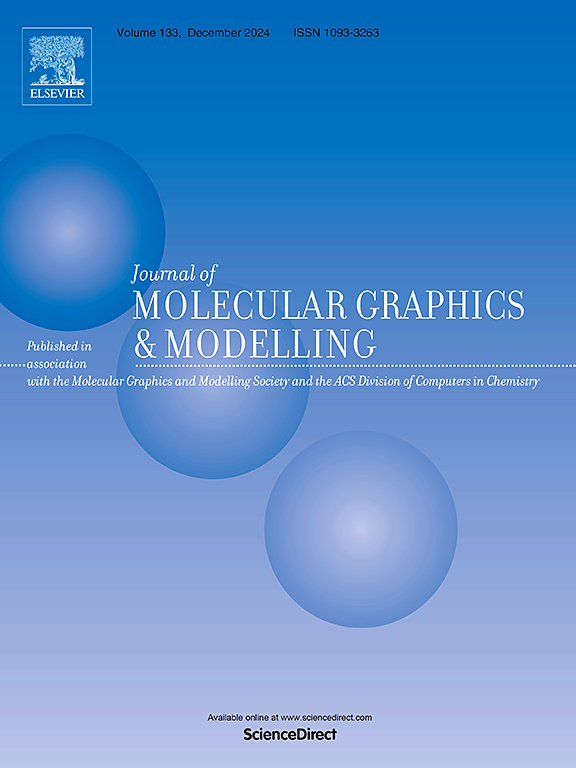Noncovalent guest-host interactions unlock the potential of MOFs for anesthetic xenon recovery: GCMC and DFT insights into real anesthetic conditions
IF 2.7
4区 生物学
Q2 BIOCHEMICAL RESEARCH METHODS
引用次数: 0
Abstract
Innovative designs offering cost-effective and highly efficient methods for xenon (Xe) recovery are becoming important for developing sustainable applications. Recently, the use of metal–organic frameworks (MOFs) has shown promise as candidates for separating Xe from anesthetic gas mixtures, however, there are limited studies available. We conducted combined Grand Canonical Monte Carlo (GCMC) and Density Functional Theory (DFT) simulations to determine the Xe recovery capacities of 19 MOFs from the exhaled anesthetic gas mixture, Xe/CO/O/N. COCMUE, GUHMIH, MAHCOQ, and PADKOK have demonstrated overall larger volumetric and gravimetric Xe uptake, demonstrating how ligand types can enhance selective Xe adsorption in MOFs. At low pressures, Xe atoms mainly adsorbed in close vicinity to the ligands, with tetrazole, phenyl, pyridyl, carboxamide, dicarboxylic acid, phenoxazine, and triazole ligands in the MOF structures acting as Xe trapping locations. Electronic structure analyses reveal that Xe-host interactions are primarily driven by charge-induced dipole and aerogen– interactions. Our combined GCMC and DFT study shows that a relatively high amount of anesthetic Xe can be captured from real anesthetic exhale gas mixtures using MOFs with the proper chemical and geometrical characteristics. These characteristics maximize noncovalent Xe-host interactions and ultimately enable the utilization of Xe as an anesthetic gas in clinical applications.

求助全文
约1分钟内获得全文
求助全文
来源期刊

Journal of molecular graphics & modelling
生物-计算机:跨学科应用
CiteScore
5.50
自引率
6.90%
发文量
216
审稿时长
35 days
期刊介绍:
The Journal of Molecular Graphics and Modelling is devoted to the publication of papers on the uses of computers in theoretical investigations of molecular structure, function, interaction, and design. The scope of the journal includes all aspects of molecular modeling and computational chemistry, including, for instance, the study of molecular shape and properties, molecular simulations, protein and polymer engineering, drug design, materials design, structure-activity and structure-property relationships, database mining, and compound library design.
As a primary research journal, JMGM seeks to bring new knowledge to the attention of our readers. As such, submissions to the journal need to not only report results, but must draw conclusions and explore implications of the work presented. Authors are strongly encouraged to bear this in mind when preparing manuscripts. Routine applications of standard modelling approaches, providing only very limited new scientific insight, will not meet our criteria for publication. Reproducibility of reported calculations is an important issue. Wherever possible, we urge authors to enhance their papers with Supplementary Data, for example, in QSAR studies machine-readable versions of molecular datasets or in the development of new force-field parameters versions of the topology and force field parameter files. Routine applications of existing methods that do not lead to genuinely new insight will not be considered.
 求助内容:
求助内容: 应助结果提醒方式:
应助结果提醒方式:


